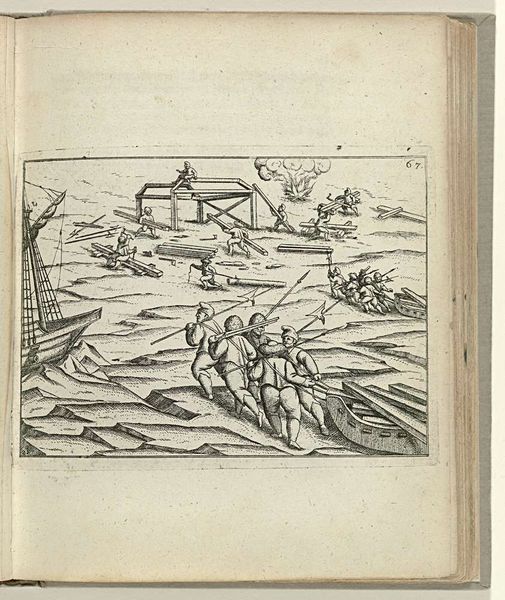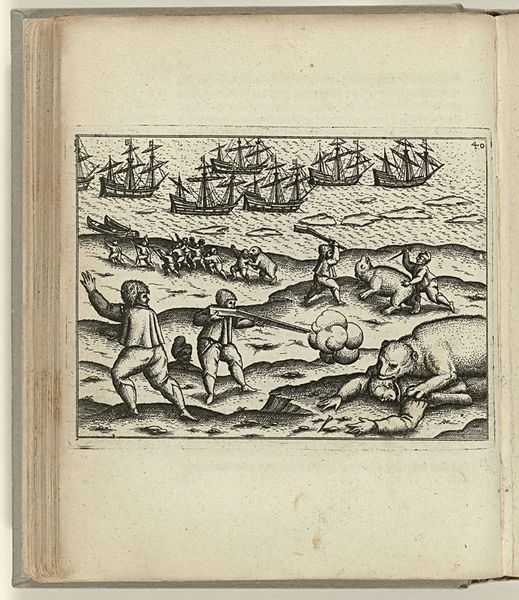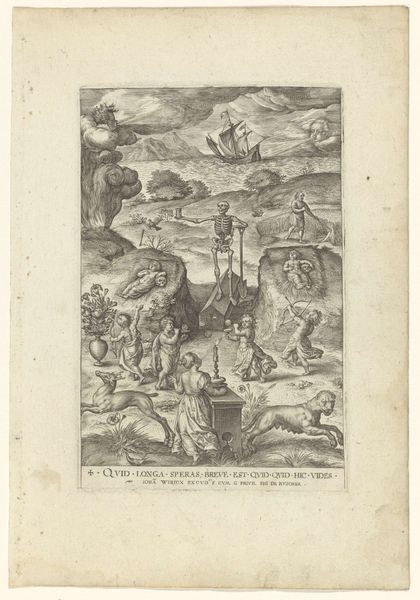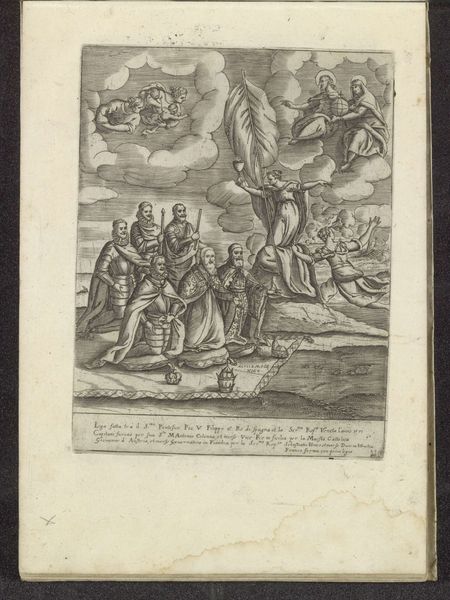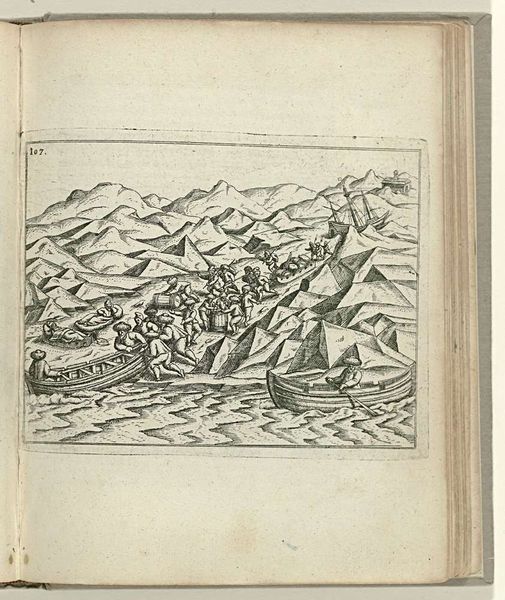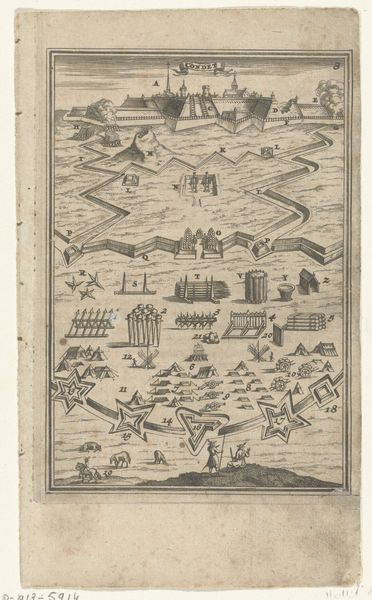
print, engraving
#
aged paper
#
toned paper
#
narrative-art
# print
#
pen sketch
#
sketch book
#
landscape
#
figuration
#
11_renaissance
#
personal sketchbook
#
pen-ink sketch
#
pen work
#
sketchbook drawing
#
genre-painting
#
storyboard and sketchbook work
#
northern-renaissance
#
sketchbook art
#
engraving
#
realism
Dimensions: height 105 mm, width 145 mm
Copyright: Rijks Museum: Open Domain
Curator: Here we have "Schieten en villen van een ijsbeer," or "Shooting and Skinning a Polar Bear," from 1597. It's a print, an engraving, that currently resides at the Rijksmuseum. Editor: Whoa, dark humor right off the bat! Look at that tiny bear, all offended about the large creature on the ground and these men, so casually working...it’s both chilling and fascinating. A scene so removed from modern life that it’s genuinely alien. Curator: Yes, consider the context: this image wasn't necessarily intended as entertainment, but as a document, circulating information, particularly about far-off, newly encountered lands and their resources. The bear's skin represented valuable commodities, illustrating economic exploitation of the Arctic regions. Editor: Exploitation is the right word. Even just the medium, that meticulous engraving, makes you think of relentless work, doesn't it? Look at all those precise little lines, mimicking the hard labor. And then think about who gets to enjoy the 'product', presumably someone far away and detached. There's such a gulf. Curator: Absolutely. We need to remember these prints weren’t passive images. They actively participated in shaping European understandings and attitudes towards those regions and their inhabitants. What might appear exotic also reinforces certain colonial narratives. The method, in its stark detail, emphasizes a specific perspective. Editor: And even compositionally! All those parallel lines, the architecture so ordered contrasted with the 'untamed' nature around them. Is it meant to highlight human control? Are those guys working methodically, taking over the wilderness one pelt at a time. And why is there even smoke coming from that tower like an active factory or a settlement? Curator: Possibly both. Think about what an organized space signified in this era – power, technological advantage, industry that could strip even polar bears. The details regarding social interactions tell a whole story of colonialism. Editor: True, true. So beyond being a kind of weird survival snapshot it's really laying bare some harsh colonial truths in these small acts. Still… I can't help but look at that bear's little outrage puff. Even bleak history has moments of absurdist emotion, right? Curator: Indeed, finding that emotional resonance amid broader societal examinations is vital, and you can’t just consider the art removed from who’s in front of it today, viewing and assessing and contextualizing this work today.
Comments
No comments
Be the first to comment and join the conversation on the ultimate creative platform.


